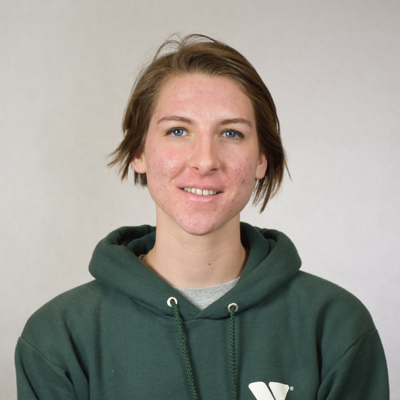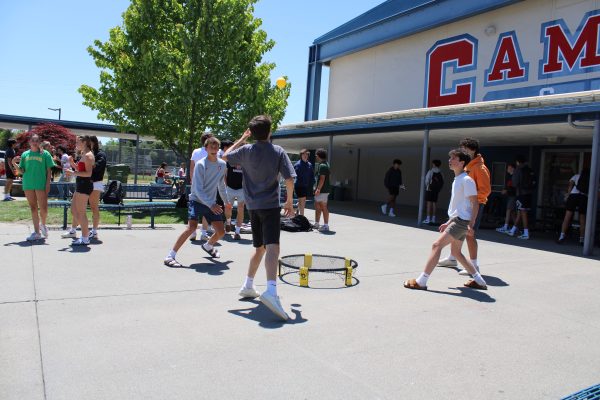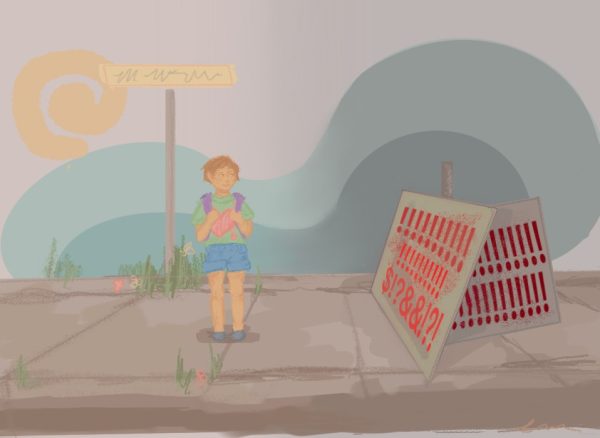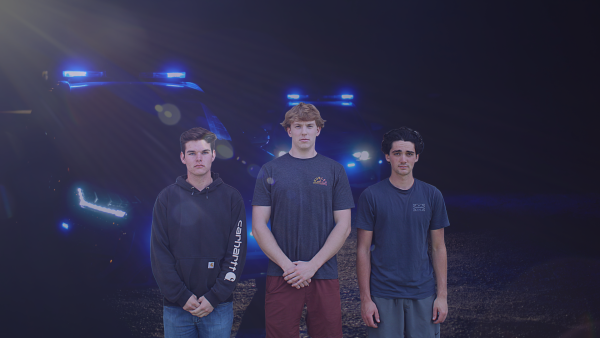Robotics’ Space Station Experiment Returns
March 28, 2017
After a year in space, the robotics team’s 3D printed game returned from the International Space Station (ISS) on March 19. The team, known as the Boss Bots, created the “Star Catcher” game during the 2016 competition season and submitted their design for 3D printing on board the ISS on January 5.
The Boss Bots were the first high school team to participate in the pilot program through Made In Space, a company that develops manufacturing methods used in space. The pilot program, according to principle investigator for the pilot program, Mary Joe Marggraff, is “to get more students interested in space.”
Instructions were given to the astronauts to use the ISS 3D printer, then assemble the game. Senior Bennett Coates, who led the robotics team in designing the game, described it as “hot potato in space.” It involves a ball and pyramid is inside a hollow frame, with the objective of getting the ball into the pyramid before the time runs out. Since they are in microgravity, astronauts must manipulate the “Star Catcher” in a way that would be impossible on Earth.
The game is meant to provide on board entertainment for astronauts. “On the International Space Station, all of that is experimental. The results help us on Earth, [with] products like medicine and agriculture. Putting it into the context of the situation, the astronauts have a very busy schedule. At the end of the day, they’d like to have something fun to do,” said Marggraff.
The club is excited to have the game returned after its long journey. “Very shortly we will have it, this piece of 3D material that was actually in space, on the international space station,” said Coates.
First, the astronauts will debrief about the use of the game before returning it. “We’ll [Made In Space] get some direct feedback from the astronauts,” said Marggraff.
Coates captained the design efforts. “I would go off in a corner – usually I’d go with other people – and we’d have a white board and we’d just go at it for 2 hours, trying to come up with something,” he said. “It took about 2 or 3 months of doing that before we were able to settle on a design.”
Margraff said that the assistance of teachers Jonathan Chu and Nita Madra, as well as team member senior Stone Mao giving the robotics team a place to work, helped the project. She added that the robotics team is “a talented and creative group of young people.”
Even after the game was successfully printed aboard the ISS, the team was still very involved in the Gravity Games project. Members of the robotics team attended the 2016 International Space Station Research & Development Conference where they presented their innovation and the Gravity Games STEM program.
“We expect this to be the first of it’s kind. This is a pilot team that is sort of paving the way for other students,” said Marggraff. She went on to say that “creativity and initiative are all part of science. This was a design-based project so I hoped it helped to create an identity of innovators for the team.”
Since “Star Catcher,” the Boss Bots have continued to innovate and initiate. Their latest ongoing project is to transform the school’s various shipping containers into farmable land. “If you were to say, grow strawberries in the shipping container in Campolindo, you’d have roughly an acre of strawberries in just that acre of space in that container. So if you could stack these [containers] 3 high, you would have 3 acres in such a small space,” said Coates.



